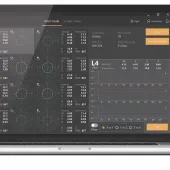Record year for Martin Marietta

Best safety performance in company’s history and record revenues, profitability and earnings
MARTIN Marietta, a leading US-based supplier of construction aggregates and heavy building materials, have reported record results for the fourth quarter and full year ended 31 December 2017.
Full-Year EBITDA surpassed US$1.0 billion (2016: US$971.6 million) and net earnings increased to US$713 million (2016: US$425.4 million) on total revenues of US$3.96 billion (2016: US$3.82 billion) for the 12-month period.
Ward Nye, chairman, president and chief executive officer of Martin Marietta, said: ‘By nearly all meaningful measures, 2017 was an extraordinary year for Martin Marietta. Among our accomplishments are two significant milestones – the best safety performance in our history and EBITDA exceeding US$1.0 billion.
‘We also delivered record revenues, profitability and earnings per diluted share for both the fourth quarter and full year, building on the momentum created by record performance in prior years.
‘Even more noteworthy, we achieved these safety and financial results despite externally driven volume headwinds prevalent throughout much of the year that reduced full-year aggregates volumes by 1 million tons, compared with 2016, and almost 9 million tons as measured against our initial 2017 guidance.
‘Our ability to post record results despite these external factors, among them extraordinary weather events, contractor labour constraints, and a slower-than-expected pace of public contract lettings, validates the successful execution of our strategic plan and underpins our optimism for a steady and extended cyclical recovery as we begin 2018.’
Looking ahead, Mr Nye said: ‘The fundamental drivers for broad-based construction activity support our optimism that we will continue to benefit from a steady multi-year cyclical recovery across our geographic footprint.
‘Our leading positions in many of the nation’s most attractive and vibrant markets should allow us to capitalize on anticipated increased demand for infrastructure projects and private-sector construction activity in 2018 and beyond.’









